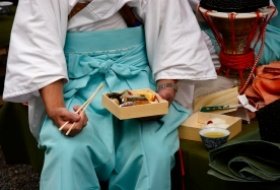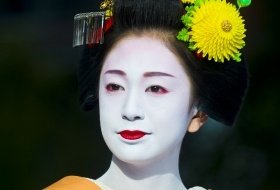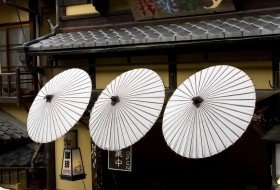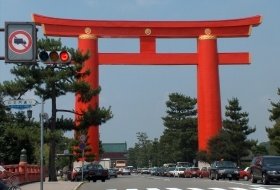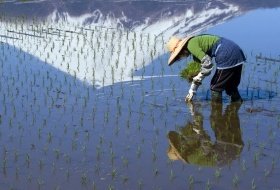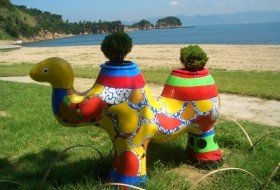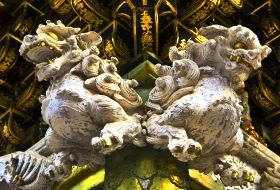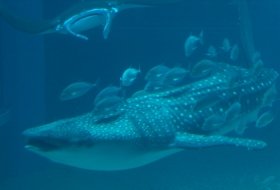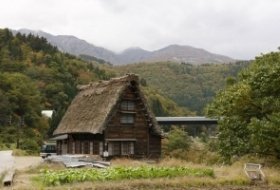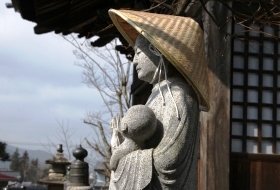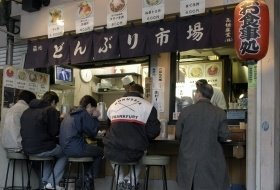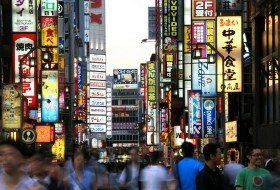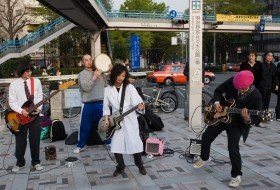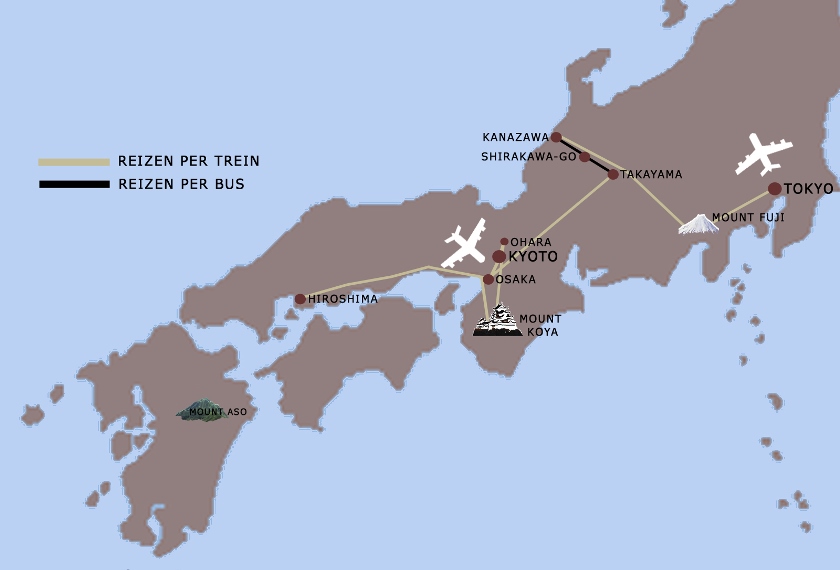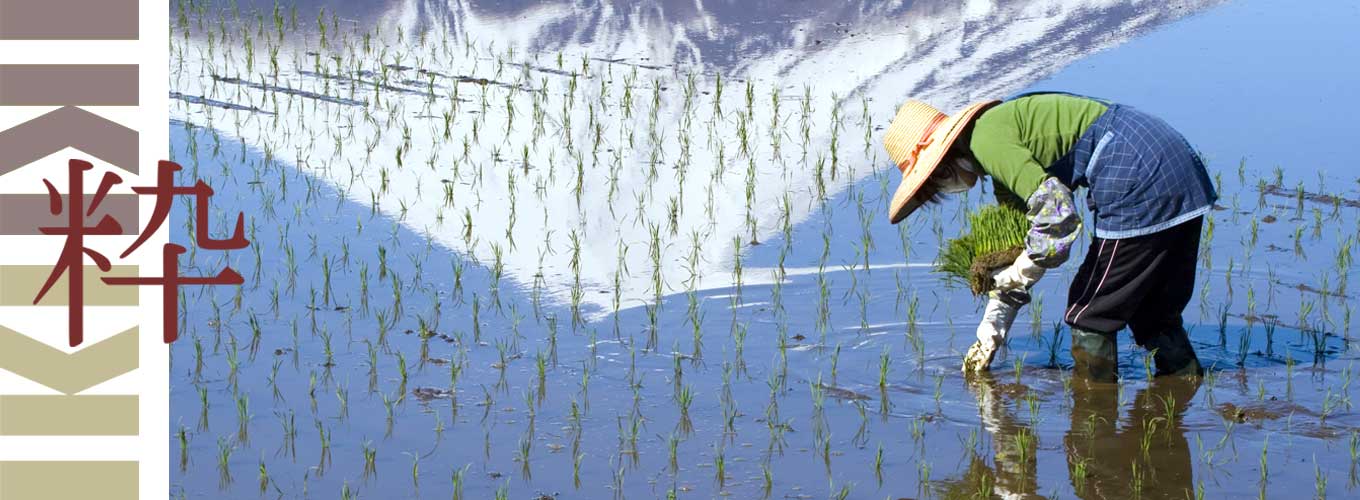
Japan summer tour, 20 days
Japan Summer tour: day-by-day itinerary
Day 1 Flight to Japan
On Day 1 departure from Schiphol or Zaventem to Ohara in Japan.
Day 2 Ohara
Arrival at Kansai International Airport in the bay of Osaka. Transfer by shuttle bus to your hotel in Ohara. The remaining part of the day, free to rest or explore the area. The gardens at the Sanzen-In Temple are really amazing. The name of one of the structures literally means “Hall of Rebirth in Paradise” and was built in 985. The Jakko-in Temple is a convent since 1186 with a long history. The location of this temple is quiet and secluded, but it’s open to the public. The best way to end the day is to enjoy a soak in a bubbling hot spring and a traditional Japanese meal at your local ryokan or minshuku. The Seryo hot springs located at the main gate of the Sanzen-in temple are the place to go.
Day 3 Ohara – Kyoto
Kyoto has remained virtually untouched by World War II. Many old temples and houses are perfectly well preserved. Places that are absolutely worth visiting are the Nijo castle and the 300 year old Nijo Jinya Inn, a former inn used by feudal lords. The Kinkakuji or Golden Pavilion is one of the main attractions in Japan, as well as the Zen temple Ryoanji with its magnificent rock gardens. Are you craving some delicious Kyoto food, then the Nishiki food Market is the place to go.
Day 4 Kyoto
After breakfast you might head to the Heian Temple. This Shinto temple with its vermilion coated gate is very popular with honeymooners, more particularly on their wedding day. The Kiyomizu temple, a wooden Buddhist temple from the 8th century is also worth a visit. How about picking up some Japanese cooking skills while in Kyoto? Today you can join a cooking class and learn to cook your favorite Japanese dishes (optional). A stroll around the Gion-district at night is a must!
A visit to Nara is an easy day trip option from Kyoto. Nara was once Japan’s first permanent capital and has many shrines and temples that have been registered as World Heritage sites. The town also hosts 6 universities.
Day 5 Kyoto
By local train you can go to Arashiyama and visit the gardens around the Tenryuji temple. These landscaped gardens were the first place in Japan to be listed as a National Historic Monument. A short walk brings you right into the heart of the famous Bamboo Grove. Would you ever imagine that bamboo could grow so tall? At night you can watch how local fishermen catch fish by using trained cormorants.
Day 6 Kyoto – Mount Koya
Mount Koya is best reached by train. Located on an 800 meter high plain, the original monastery has grown into the town of Koya. The Kongobuji temple is the head temple of the Koyasan Shingon sect within Japanese Buddhism. Here you can visit the mausoleum of Kukai, a Japanese monk, scientist, poet and sect leader from 744 till 835. The mausoleum is surrounded by Japan’s largest cemetery. You spend the night at the monastery, where monks will serve you a traditional vegetarian dinner.
Day 7 Mount Koya – Osaka
After a traditional breakfast at the temple, you travel by train to Osaka, one of the most important port towns in Japan. The Umeda Sky Building is definitely worth a visit. At the lively Kuromon food market both local house wives and restaurants chefs get their supplies. The America Mura is a vibrant area where you can admire Osaka’s youth in the most flamboyant fashion styles, hairdo’s, piercings, tattoo’s etc. And last but not least, don’t forget to pay a visit to world’s largest aquarium.
Day 8 Osaka – Hiroshima
The trip from Osaka to Hiroshima is best covered by the Shinkansen (Bullet train). Hiroshima was the first town in the world’s history to have suffered atomic attacks. The many different monuments and expositions at the Peace Memorial Park and the Peace Museum clearly commemorate the atrocities of this nuclear bomb explosion. Nowadays Hiroshima is known as City of Peace.
Day 9 Hiroshima – Miyajima – Hiroshima
The island of Miyajima can be reached by local train and ferry boat. The island houses the Itsukushima temple, famous for its giant torri gates, which at high tide seem to float on water. For Japanese this sight is ranked as one of Japan’s three main attractions. Afterwards you can visit the Daishoin Temple at the base of Mount Misen. Daishoin’s main attraction is the burial site of half of the Mori clan, feudal lords who governed during the Edo Period (1603 – 1868). The stone lanterns lining the paths leading to the graves produce a spiritual atmosphere. Return by ferry and train to your hotel in Hiroshima.
Day 9 Hiroshima – Naoshima (optional)
By Shinkansen (Bullet train) you travel to Okayama. From there a local train will take you to Uno and a ferry to Naoshima. This island in the Japan sea is like an open-air museum!! There is even a (James Bond) 007 museum. Definitely go and have a look inside the Chichu Museum. The museum building, designed by Ando Tadao, is in itself a work of art and perfectly blends in with the surrounding natural environment. Dotted across the island you stumble across works of many great modern artists. Staying at the famous Benesse House is definitely worth the splurge (optional).
Day 10 Hiroshima (of Naoshima) – Takayama
Travel by Shinkansen to the mountain town of Takayama. Here time stands still. The Sannomachi area with its many old streets and merchant houses, boutiques, sake breweries and inns is very pleasant to walk around in. In spring and autumn Takayama is renowned for its many festivals (14th and 15th of April and 9th and 10th of October). The Yatai Kaikan Hall exhibits some of the beautiful Festival Floats.
Day 11 Takayama – Shirakawago
Travel by bus to Shirakawago. This village is home to some well-preserved traditional “Ghasso–zukuri” houses. These houses have steep roofs made from thick layers of reed. Some of the houses in the village are more than 250 years old and were used for the cultivation of silk worms. The ground floors are the residence home of some huge families up to 20-30 members. It is possible to spend the night and have dinner at a minshuku (this one comes without private bathroom).
Day 12 Shirakawago – Kanazawa
By bus to Kanazawa. Kanazawa lies perched between the Japanese sea and the Japan Alps The town’s main attraction is the Kenrokuen, one of Japan’s three best landscaped gardens and by many considered as the most beautiful one. The Nomura house is a restored samurai residence of the Normura family. It’s open to the public.
Day 13 Kanazawa
The Higashi Pleasure district is the area where the famous geisha used to live. There is a nice food market with many street stalls: the perfect place for a nice dinner. The modern “21st Century Museum of Contemporary Art” is different and unique as the museum is comprised of a circular building with no facade or entrance.
Day 14 Kanazawa – Kawaguchiko Mount Fuji
Today you travel by train to Lake Kawaguchiko at the base of the volcano. Mount Fuji is with 3776 meters, Japan’s highest mountain. From Lake Sai’s western end you will get spectacular views of the Fuji-San, as the Japanese affectionately call their mountain. The area is also great for walking.
Day 15 Kawaguchiko Mount Fuji
Climbing to the top of Mount Fuji is only possible in July and August. At other times the mountain is covered by snow. The shortest ascent starts from the 5th Station. It takes an average person five hours to climb up and another three hours to descend. Nothing could be more soothing after a long day’s trekking than a soak in your ryokan’s hot tub, while enjoying a panoramic view of Mt. Fuji.
Day 16 Kawaguchiko – Tokyo
In the early morning travel to Tokyo. After checking-in at your hotel you can go for a stroll in the city. For a bird’s eye view of this sprawling metropolis, head to the top floors of the Metropolitan building; you might even be able to spot Mount Fuji in the distance.
Day 17 Tokyo
In downtown Tokyo alone live more than 13 million people. In the many different neighborhoods of this metropolis, pleasant surprises wait around every corner. A visit to the Edo Museum illustrates the past of Tokyo from the Edo period to recent modern times. The Asakusa Kannon Temple, also called the Senso-Ji, is Japan’s oldest Buddhist temple, it was built in 628. Electric city, or Akihabara, is famous for its many electronic discount shops. Another increasingly popular hotspot for foreigners, as well as locals, is Odaiba, a popular shopping and entertainment district on a man-made island in Tokyo Bay.
Day 18 Tokyo – Nikko – Tokyo (optional)
From Tokyo, you can make an easy one day escapade to one of Japan’s main temple cities Nikko. You can either go on your own, or join an international tour. The Toshuku Shinto temple, located at the entrance of a National Park, is a symbol for Shinto worship that tends to make harmonious relations between human beings and nature. The most important site in Nikko is the shrine of Toshogu, the final resting place of shogun Tokugawa Ieyasu (1543-1616), the founder of the stable Tokugawa Shogunate that ruled Japan for over 250 years until 1868. Lake Chuzenji is famous because of its 48 sharp turns. The lake is located at the foot of Mount Nantai, a sacred volcano, that created Lake Chuzenji about 20,000 years ago. Return to Tokyo by train.
Day 19 Tokyo
Early birds can head to the world’s biggest fish auction at the impressive Tsukiji market. A sashimi or sushi breakfast cannot get any fresher than this. The Harajuku area, with its many trendsetting fashion shops, is definitely a must-see if you wish to immerse yourself in Japanese pop-culture. With so much on offer in this fashion and culinary capital of the world, it’s hard to get bored.
Day 20 Tokyo – Amsterdam
After breakfast proceed to Narita Airport for check-in and return flight home.
Japan summer tour day by day schedule
| Day 1 | Flight to Japan |
| Day 2 | Ohara |
| Day 3 | Ohara – Kyoto |
| Day 4 | Kyoto |
| Day 5 | Kyoto |
| Day 6 | Kyoto – Mount Koya |
| Day 7 | Mount Koya – Osaka |
| Day 8 | Osaka – Hiroshima |
| Day 9 | Hiroshima – Miyajima – Hiroshima |
| Day 10 | Hiroshima – Takayama |
| Day 11 | Takayama – Shirakawago |
| Day 12 | Shirakawago – Kanazawa |
| Day 13 | Kanazawa |
| Day 14 | Kanazawa – Kawaguchiko Mt.Fuji |
| Day 15 | Kawaguchiko Mt.Fuji |
| Day 16 | Kawaguchiko – Tokyo |
| Day 17 | Tokyo |
| Day 18 | Tokyo – Nikko – Tokyo (optional) |
| Day 19 | Tokyo |
| Day 20 | Tokyo – Amsterdam / Brussels |
Price Japan Summer tour:
This tour package can be booked from € 2.410,- per person, based on double occupancy and depending on your chosen travel dates.
Different ways of traveling
Many people, many preferences, many different ways of traveling. One traveler prefers simple, yet good, another one prefers good, yet also a bit more luxurious. We therefore offer tours in different price categories.
| € 2.410,– | *** hotels | Budget accommodations | ||
| € 2.990,– | **** hotels | Comfortabele 4 star hotels | ||
| € 4.440,– | ***** hotels | Deluxe 5 star hotels |
Included:
– All accommodation, including breakfast
– 5 dinners, more particularly in Ohara, Mount Koya, Shirakawago en Kawaguchiko
– All train journeys as per itinerary
– A two week Japan Rail pass
– Transfer from Kansai Airport to Ohara
– A detailed information brochure, including maps and translations.
Not included:
– International flight to/from Japan
– Transfers to/from the airport
– Ferries, local buses and subways, local busses and metro
– Entrance fees, services of local guides
– Travel and Cancellation insurance
– Administration cost € 25,– p.p. (Max € 50,– per file)
– Calamity Fund € 2,50 per file
